|
|
Post by stoneage on May 5, 2011 22:00:53 GMT
Really enjoying the photos Stoneage. I'm afraid Starlux have passed me by as a collector (I never saw any as a kid in NE England), but they do look very attractive and have a great and inventive range of animals. I assume that the figures have the year of manufacture stamped on them so you know when they were made? The dates aren't on the figures. I made a copy of a French Animaux Prehistoriques catalog that Kikimalou posted, somewhere here on the blog, that had all the dates and catalog numbers for each of these figures. It's written in French. |
|
|
|
Post by stoneage on May 5, 2011 22:03:33 GMT
My Cenozoic Starlux  |
|
|
|
Post by sbell on May 5, 2011 23:11:39 GMT
Based on the tusks, this one is often assumed to represent Anancus more than any other mastodon. Although actually a gomphothere, they had mastodont tusks. Fun fact--I have one, but the tusks were broken off. So they were replaced with real mammoth-ivory tusks!  Wouldn't real ivory Mammoth tusk be too big for such a small figure? I see what you're doing there. But of course, they were just carved.  Obviously, they are a little straighter than the Starlux. |
|
|
|
Post by stoneage on May 5, 2011 23:22:04 GMT
 Wouldn't real ivory Mammoth tusk be too big for such a small figure? I see what you're doing there. But of course, they were just carved.  Obviously, they are a little straighter than the Starlux. Was it expensive to do that? And what about the weight? |
|
|
|
Post by sbell on May 6, 2011 0:06:14 GMT
I see what you're doing there. But of course, they were just carved.  Obviously, they are a little straighter than the Starlux. Was it expensive to do that? And what about the weight? I know a guy, I traded him a bunch of things of some sort (can't even remember what now, it was about 6 years ago); he also did the fix on the tail, as well a a tail fix for a Platybeledon (both in wood) and the two cranial horns on a Synthetoceras (using real pronghorn horn). As for weight, they don't seem to have any effect on the balance of the figure, and they don't sag. |
|
|
|
Post by stoneage on May 6, 2011 14:47:40 GMT
Was it expensive to do that? And what about the weight? I know a guy, I traded him a bunch of things of some sort (can't even remember what now, it was about 6 years ago); he also did the fix on the tail, as well a a tail fix for a Platybeledon (both in wood) and the two cranial horns on a Synthetoceras (using real pronghorn horn). As for weight, they don't seem to have any effect on the balance of the figure, and they don't sag. Well I can see using wood or something but actually carving Woolly Mammoth Tusk Ivory? How much would that cost just for the ivory and then your going to carve it? And Pronghorn Horn? |
|
|
|
Post by stoneage on May 6, 2011 14:58:16 GMT
Another thing that Starlux is known for, and collectors have a special interest in, is It's early Devonian through Triassic non-Dinosaur life. Another Starlux first was the Starlux Mastodonosaurus 1982. 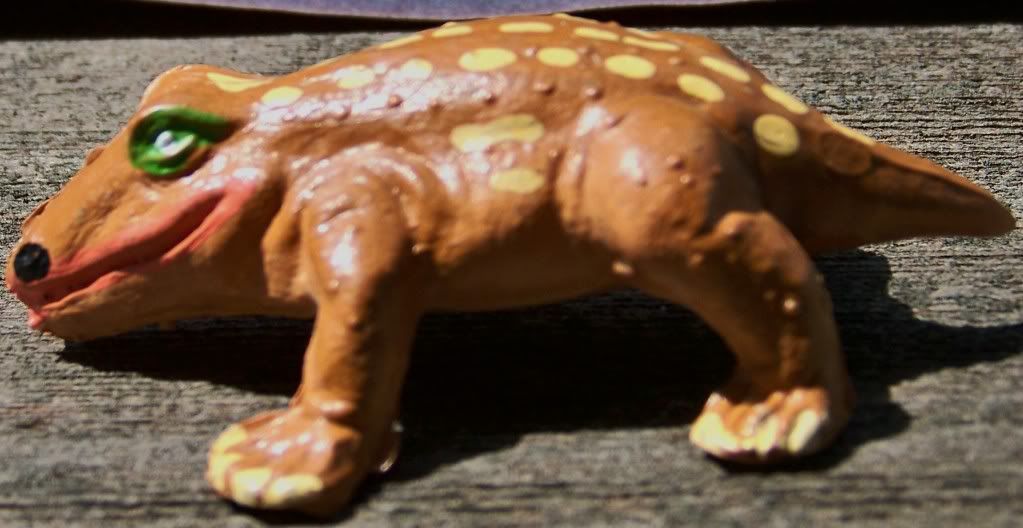 |
|
Battatitan
Junior Member
  I am member 500!!
I am member 500!!
Posts: 94
|
Post by Battatitan on May 6, 2011 15:11:37 GMT
Nice.  And thanks for the Eohippus pic!! |
|
|
|
Post by stoneage on May 6, 2011 15:20:11 GMT
Really enjoying the photos Stoneage. I'm afraid Starlux have passed me by as a collector (I never saw any as a kid in NE England), but they do look very attractive and have a great and inventive range of animals. I assume that the figures have the year of manufacture stamped on them so you know when they were made? The dates aren't on the figures. I made a copy of a French Animaux Prehistoriques catalog that Kikimalou posted, somewhere here on the blog, that had all the dates and catalog numbers for each of these figures. It's written in French. Here I found it on an old Starlux, What Is Starlux thread. Here is the thread dinotoyforum.proboards.com/index.cgi?board=toys&action=display&thread=1048 |
|
|
|
Post by stoneage on May 6, 2011 15:22:47 GMT
Nice.  And thanks for the Eohippus pic!! Your welcome!  |
|
|
|
Post by stoneage on May 7, 2011 20:47:17 GMT
Starlux Cynognathus 1974 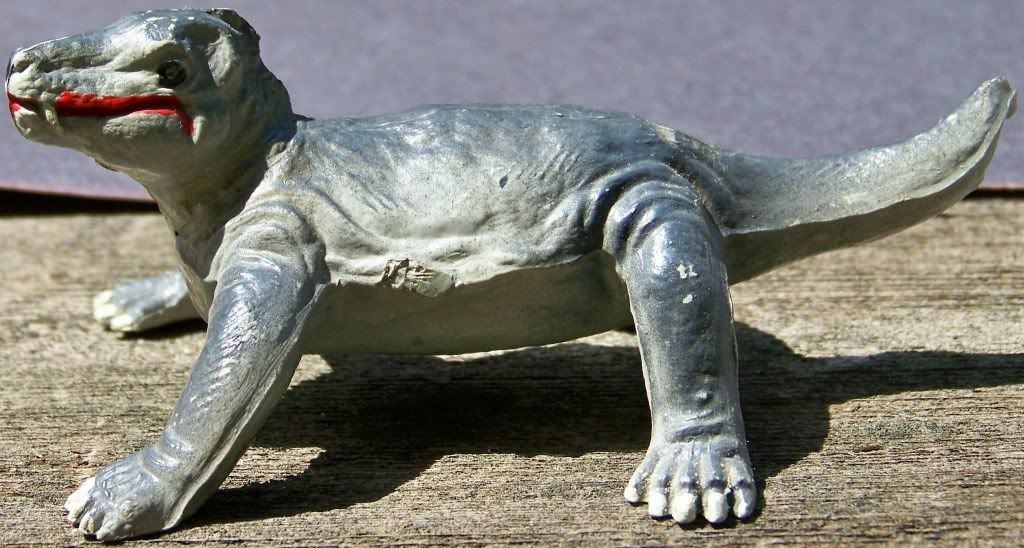 |
|
|
|
Post by stoneage on May 8, 2011 12:33:12 GMT
Starlux Placochelys 1982  |
|
|
|
Post by stemturtle on May 8, 2011 14:56:44 GMT
Stoneage, I am enjoying your presentation of Starlux figures. You probably realize that Placochelys is actually Placodus. That's what we get for relying on the manufacturer to provide identification of the species. Placochelys looked very similar to a sea turtle.
|
|
|
|
Post by stoneage on May 8, 2011 17:46:53 GMT
Stoneage, I am enjoying your presentation of Starlux figures. You probably realize that Placochelys is actually Placodus. That's what we get for relying on the manufacturer to provide identification of the species. Placochelys looked very similar to a sea turtle. Yes you are right. I should have mentioned that but I was in a hurry to go somewhere. Thanks for pointing that out. |
|
|
|
Post by stoneage on May 8, 2011 17:50:04 GMT
Starlux Diplocaulus 1972 (they are sold as a pair) 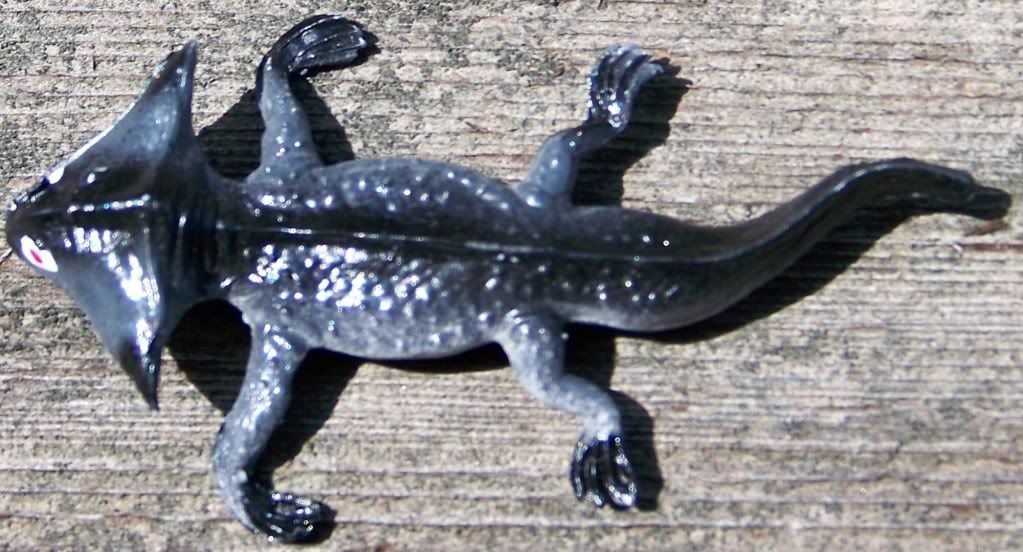  |
|
|
|
Post by stoneage on May 8, 2011 18:10:27 GMT
Starlux Ichthyostega 1983  |
|
|
|
Post by ichthyostega on May 8, 2011 18:47:22 GMT
I want that starlux Ichthyostega  |
|
|
|
Post by stoneage on May 8, 2011 23:06:44 GMT
Starlux Eusthenopteron 1983  |
|
|
|
Post by stoneage on May 8, 2011 23:55:14 GMT
Starlux Edaphosaurus 1983 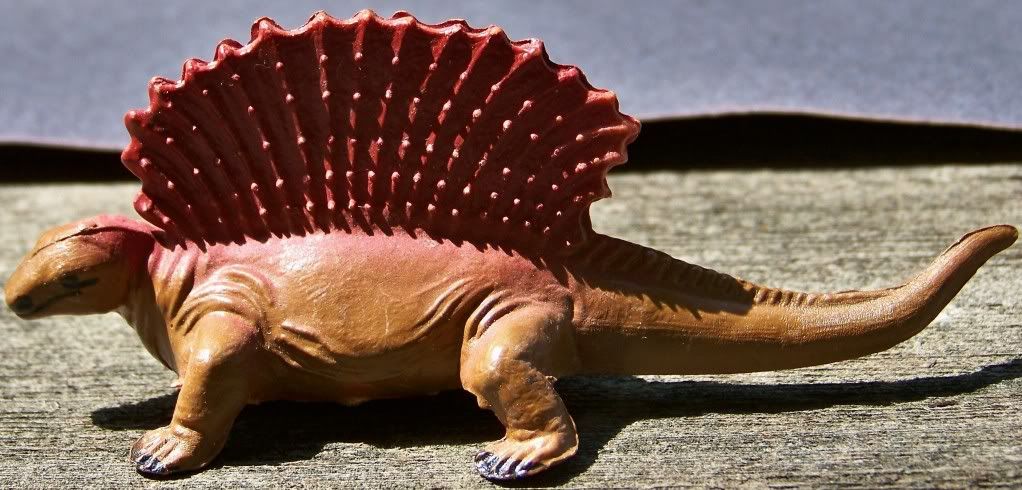 |
|
|
|
Post by stoneage on May 9, 2011 0:01:34 GMT
Starlux Drepanaspis 1983  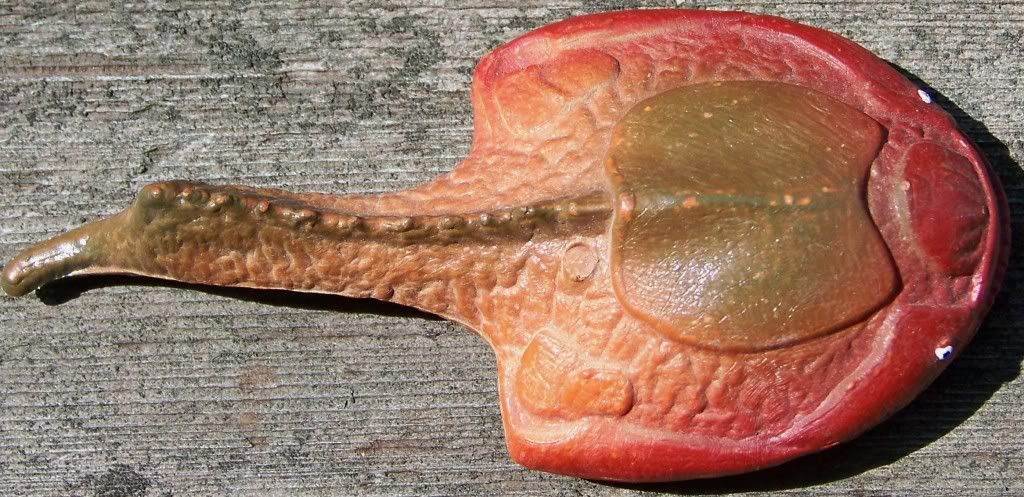 |
|